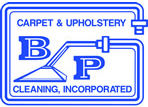February 19, 2024
Smell is the most primitive of the five senses and is more powerful than we think. The fra-grances of food enhance our sense of taste. Pleasant scents create a feeling of calm and con-tentment, while unpleasant ones may be a cause for alarm. Unfamiliar odors can create anxi-ety, especially when the source is unknown. The nose knows,as they say. But what about “newcarpet smell?” For many, this odor is welcome, as weenter a carpet store or have new carpet installed in ourown homes. It smells like a new beginning. But is thissmell hazardous?Volatile Organic Compounds The unmistakable odor produced by new carpetis caused by a volatile organic compound or VOC. Volatile simply means it evaporates readily at nor-mal temperatures. This volatility makes it easy for usto smell. VOCs are present in many new man-madebuilding materials including sheet vinyl floor covering,wall coverings, floor finishes, adhesives and paint.VOCs are what create “new car smell”, “new carpetsmell” and the smell that you probably don’t enjoy somuch after you paint a room here are many different typesof VOCs but the one related tonew carpet odor is 4-phenylcyclo-hexene (4-PCH), a by-product ofthe synthetic latex binders used tohold the carpet backing together.Although new carpet does producethis volatile organic compound,emissions from carpet as measuredduring EPA studies ranked amongthe lowest overall contributors toindoor air quality issues. Most of theVOCs present in carpet dissipatewithin 24-48 hours after installation.Ventilation during and after carpetinstallation helps to reduce thatlength of time. EPA Testing Several years ago, as the EPA was renovating its Washington DCheadquarters, some employeescomplained that odor from the newcarpet was making them sick witha variety of symptoms includingrespiratory irritation, headaches andgeneral malaise. The EPA enlisted help from carpet and latex manufac-turers to investigate the complaints.Following laboratory testing andextensive government agencyreview, no connection between4-PCH and any kind of adversehuman health outcome could beestablished. As a result, the EPAdescribes 4-PCH as an “unremark-able chemical.”Many people have the belief that“new carpet odor” is caused byformaldehyde used in the produc-tion of carpet. Research conductedby the School of Textile Engineer-ing, Georgia Institute of Technologydispelled this widely held myth.Current industry standards are inplace so that all new carpet pro-duced is monitored for this chem-ical. Formaldehyde has not beenused in the production of carpet inthe United States for decades. Latex Issues What about people who areallergic to latex? The latex used in modern carpet is synthetic and notlinked with the allergic reactionscaused by proteins found in naturallatex. All of the materials used inthe manufacture of carpeting areprimarily the same harmless materi-als found in clothing, furniture andbedding. Nylon, polypropylene,polyester and wool constitute themajority of the components foundin carpet.So the conclusion is that there isno evidence that new carpet odoris a cause for alarm. However, sinceodors can create different reactionsin individuals, it makes sense toaddress any complaints to preventdiscomfort. As mentioned earlier,ventilating the structure during andafter installation is the best way toreduce the buildup of 4-PCH in theindoor environment.

